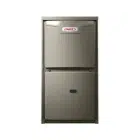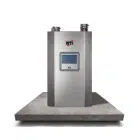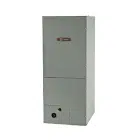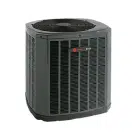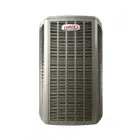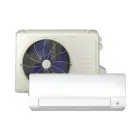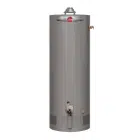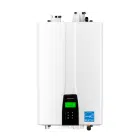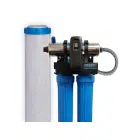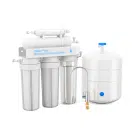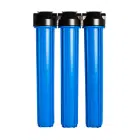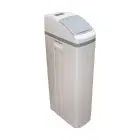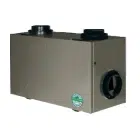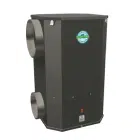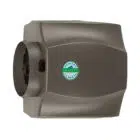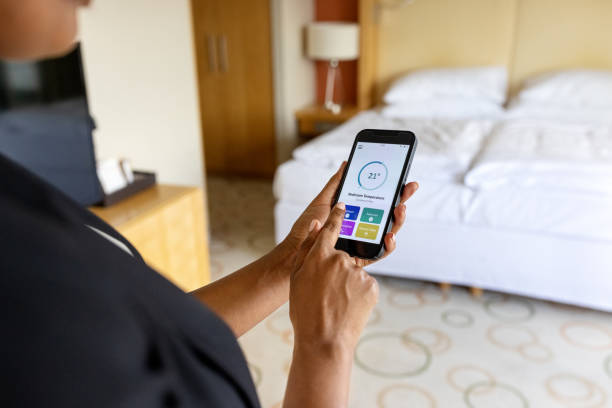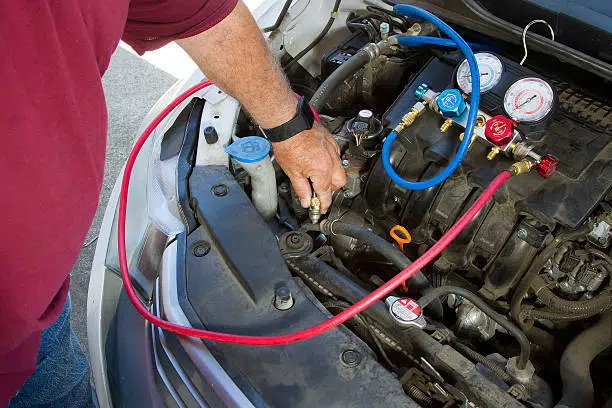
Table of Contents
When the snow falls and the wind howls outside, there’s nothing like the feeling of stepping into a warm, cozy home. But what’s the best way to keep your home comfortable without sending your energy bills through the roof? As a Canadian, you know all too well that winter can be a long, harsh season, and knowing how to strike the perfect balance between warmth and cost-effectiveness is key.
So, what’s the “right” temperature for your home in winter? The truth is, there isn’t a one-size-fits-all answer. But don’t worry—we’re here to guide you through the process of finding the ideal indoor temperature that keeps you comfortable while keeping your energy costs in check.
Why Winter Temperature Matters: More Than Just Comfort
Here’s the deal: when you live in Canada, your heating system is probably one of the most essential parts of your home during the winter months. But it’s also one of the biggest energy consumers, especially if you don’t know the best way to optimize it.
While staying warm is important, it’s also about finding a temperature that doesn’t completely break the bank. Your heating system works hard to maintain that warmth, and even small changes can make a noticeable difference in your energy bills. So, let’s dig into why temperature is more than just about feeling cozy—it’s about saving energy and protecting your home from winter’s worst.
Factors to Keep in Mind When Setting Your Winter Temperature
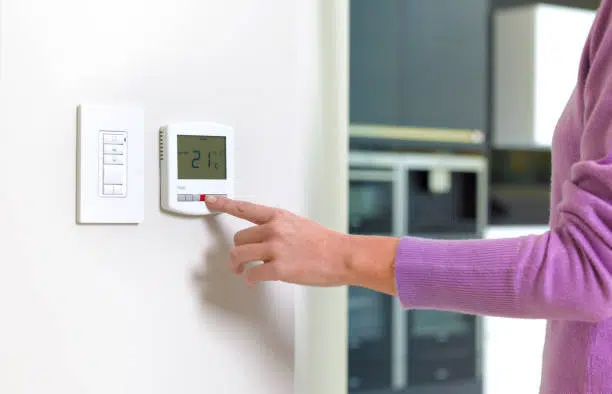
Before we get into exact temperature recommendations, it’s helpful to consider a few key factors that will affect your thermostat decisions. Trust us, this will make your life a whole lot easier (and your bills lower).
1. Where You Live in Canada
Canada is a big place, and the climate can vary drastically depending on your region. For example, if you’re living in Vancouver, you might experience milder, wetter winters. But head up to the North, and you could be dealing with temperatures well below -30°C at times. The right temperature in winter for your home should take these regional differences into account.
If you’re in a colder region, you’ll likely need to keep your home a bit warmer. But that doesn’t mean you should just crank up the heat—energy efficiency still matters, no matter how chilly it gets outside.
2. Your Personal Comfort Preferences
House temperature in winter is a personal thing. You might love a toasty, 72°F (22°C) environment while you’re lounging around, while others might prefer a slightly cooler setting. Maybe you’re someone who loves sleeping in a cooler room—well, that’s something to factor in, too.
If you’re sharing your home with family members, especially young children, elderly individuals, or people with health issues, you’ll want to make sure the temperature is higher to keep everyone comfortable. But for most people, there’s a range that works just fine.
3. Your Heating Bill and Energy Efficiency
Here’s a secret: the lower you set your thermostat while still staying comfortable, the less you’ll pay on your heating bills. This isn’t about freezing yourself out—it’s about making small adjustments that add up over time. Whether it’s turning the heat down at night or using a smart thermostat to adjust temperatures while you’re away, it’s all about reducing energy consumption without sacrificing comfort.
So, What’s the Ideal Temperature for Your Home During Winter?
Here’s where the fun begins. While there’s no magic number, there are general temperature ranges that can help you find that sweet spot between warmth and energy savings. Let’s break it down:
When You’re Home and Active
During the day, especially when you’re moving around and being active, you don’t need your home to feel like a sauna. Most people find that ideal room temperature is between 20-22°C (68-72°F) for everyday activities. At this temperature, your house feels comfortable but not overly hot, and your heating system isn’t working overtime.
If you’re sitting down to read a book or binge your favorite show, this temperature should still be comfortable. But if you’re running around doing chores, you’ll likely be just fine with it slightly cooler.
When You’re Sleeping or Away
When you’re tucked into bed and the house is quiet, the temperature in winter doesn’t need to be quite as warm. Lowering the thermostat to 16-18°C (60-64°F) can actually help improve your sleep quality, as your body naturally cools down during the night. Plus, you’ll be bundled up under blankets, so it’s a win-win.
If you’re away during the day or out for the evening, drop your thermostat to around 17-18°C (62-64°F). This way, you’re not wasting energy while you’re not home, but you won’t come back to a chilly house either.
For Special Situations
There are always exceptions, right? If your home has a lot of big windows or tends to lose heat quickly, you may need to keep the house temperature in winter a bit higher. Alternatively, if your house is well insulated, you might find that you can get away with a lower setting and still stay comfortable.
Here’s a quick breakdown of the optimal temperatures:
|
Situation
|
Temperature Range
|
|---|---|
|
Daytime (Active)
|
20-22°C (68-72°F)
|
|
Nighttime (Sleeping)
|
16-18°C (60-64°F)
|
|
Away from Home
|
17-18°C (62-64°F)
|
Tips to Make Sure Your Winter Temperature Stays Just Right
Now that you know what temperatures work best, here are a few tricks to make sure you’re getting the most out of your heating system while keeping things efficient.
Thermostat Malfunctions
When your thermostat isn’t working correctly, it can throw off the entire heating system. Our technicians check for faulty wiring, incorrect calibration, and other issues, ensuring that your thermostat communicates accurately with your furnace.
Ignition and Pilot Control Issues
If the pilot light or electronic ignition malfunctions, your furnace can’t produce heat. We troubleshoot the ignition system and make the necessary repairs to restore your heat as quickly as possible.
Clogged or Dirty Filters
A blocked filter can restrict airflow, reducing your furnace’s efficiency and potentially causing it to overheat. Our team can replace or clean furnace filters as part of the repair, ensuring your system runs smoothly.
Blower and Motor Problems
If you’re noticing weak airflow or strange noises, the blower or motor might be the culprit. We inspect these components, repairing or replacing them to restore proper function.
Check out our previous article to find out how you can repair a blower motor yourself.
Each repair comes with a focus on long-term solutions. Our technicians aren’t just fixing the immediate problem; they’re making sure your furnace is set up for reliable performance through the rest of the season.
Your HVAC system’s air ducts are responsible for moving air throughout your home. Without them, the warm or cool air wouldn’t reach each room. Leaky or blocked ducts can reduce efficiency and cause uneven temperatures, so it’s important to ensure they’re in good condition.
Why Preventive Maintenance Matters

Now that you know what temperatures work best, here are a few tricks to make sure you’re getting the most out of your heating system while keeping things efficient.
1. Use a Programmable Thermostat
A smart thermostat isn’t just a cool gadget—it’s a great way to save on your heating costs. You can set it to lower the temperature when you’re not home or while you’re sleeping, and it’ll automatically kick up the heat before you get home or wake up. It’s like having a personal assistant for your thermostat.
2. Seal Those Drafts
Feel that draft by the windows or doors? You’re not imagining it—cold air can sneak into your home through the tiniest gaps. Take the time to check for drafts and seal them up with weatherstripping or caulking. If your windows are old, consider adding a plastic film to help block out the chill. It’s a simple fix that can make a huge difference.
3. Maintain Your Heating System
It’s easy to forget about your furnace or heat pump until it stops working, but regular maintenance is essential. Make sure you’re replacing your filters regularly, scheduling annual tune-ups, and clearing any debris around vents. This keeps your system running smoothly and prevents it from working harder than it needs to.
Find your perfect furnace in Canada on our official website via the link below.
4. Consider Using Space Heaters
If you spend most of your time in one room, a space heater can be an energy-efficient way to warm up just that area. But be careful—never leave them unattended, especially if you have pets or children around.
5. Take Advantage of Natural Heat
Don’t forget about the sun! Even in winter, sunlight can warm up your home. Open your curtains during the day to let in natural heat, especially if you have south-facing windows.
Are you curious about what is better for your home – a furnace or a heat pump? Check out our comparison guide via the link below.
https://thehvacservice.ca/furnace-vs-heat-pump-which-heating-system-is-best-for-your-home/
Wrapping It Up: The Key to Comfort and Savings
It all comes down to balance. You don’t have to choose between staying warm and saving money. By setting your thermostat to the right temperature in winter, using a programmable thermostat, sealing drafts, and keeping your heating system in tip-top shape, you can enjoy a comfortable home all winter long without sacrificing energy efficiency.
If you need help fine-tuning your home’s heating system or want professional advice on keeping your energy bills under control, HVAC Service Solutions is here for you. Our team of experts is ready to help you find the perfect solution for your home, no matter how cold it gets outside.
Stay warm, stay cozy, and keep those bills in check this winter!
Frequent Asked Questions
What is the ideal temperature for my house in winter?
The ideal temperature for your home during winter typically falls between 20°C (68°F) and 22°C (72°F) when you’re active, and between 16°C (60°F) and 18°C (64°F) when you’re sleeping. This range provides a comfortable environment without overworking your heating system. However, personal comfort preferences vary, so you may need to adjust it slightly to fit your needs. For example, if you’re more sensitive to the cold, you may want to keep the temperature on the higher end of the spectrum. On the other hand, if you enjoy a cooler sleeping environment, you may prefer a lower temperature at night. It’s all about finding a balance between comfort and efficiency.
How can I save energy without feeling cold?
One of the easiest ways to save energy while keeping comfortable is to lower the house temperature in winter when you’re not at home or while you’re sleeping. For example, lowering the thermostat by 3-5°C (5-9°F) while you’re away or sleeping can result in significant energy savings without compromising comfort. Additionally, make sure to use a programmable or smart thermostat to adjust the temperature automatically. Sealing any drafts around windows and doors can also help retain heat and keep your home warmer. Lastly, wearing warm clothing, like sweaters and socks, can help you feel more comfortable in a slightly cooler house.
Why does my thermostat say 22°C, but it feels colder in the house?
Several factors could cause your home to feel colder than the thermostat reads. The thermostat might be located in a drafty area or away from heat sources, giving an inaccurate reading. Additionally, your heating system might not be circulating heat evenly throughout the house. Poor insulation, especially around windows, doors, or attic spaces, can also make your home feel colder than the temperature suggests. To address this, ensure your thermostat is installed in a central location, away from drafts, and consider improving your insulation and sealing any leaks.
How does the temperature in winter affect my energy bills?
The temperature you set your thermostat to directly impacts your energy usage. The higher you set your thermostat, the more energy your furnace or heating system will use to maintain that temperature. Conversely, setting the ideal room temperature lower, especially at night or when you’re not home, can help reduce energy consumption. Keeping your house slightly cooler in winter is one of the easiest ways to lower your energy bills without sacrificing comfort. Additionally, using a programmable thermostat to regulate temperature based on your schedule helps optimize energy efficiency.
Is it better to leave the heat on all day or turn it off when I’m not home?
It’s generally more energy-efficient to lower the temperature when you’re not home rather than leaving the heat running all day. Turning down the house temperature in winter by a few degrees while you’re away can help reduce heating costs without making it too cold when you return. A programmable thermostat is ideal for this, as it automatically adjusts the temperature based on your schedule. If you’re concerned about coming home to a cold house, set the thermostat to gradually warm up before you return so that you don’t have to wait long to feel comfortable.
How can I improve the efficiency of my heating system during winter?
To get the most out of your heating system, start by making sure your furnace or heater is well-maintained. Replace filters regularly to ensure proper airflow and efficiency. You should also schedule an annual tune-up to keep your system running smoothly. Seal up any drafts in your home and insulate your windows and doors to prevent heat from escaping. Finally, consider using a smart thermostat that learns your schedule and adjusts the temperature automatically, ensuring your home is always comfortable while saving energy.
What should I do if my house feels cold even with the heat on?
If your home feels cold despite having the heat on, there could be several reasons. Start by checking for drafts around windows, doors, and other openings. If your heating system is old or hasn’t been maintained in a while, it might not be working as efficiently as it should. Ensure that vents are not blocked by furniture or other obstacles, as this can limit the airflow and prevent your home from heating evenly. If the issue persists, it’s a good idea to schedule a professional inspection to check the system’s performance and make necessary repairs.
How can I make my home more energy-efficient during the winter months?
There are many ways to improve energy efficiency during winter. Start by sealing drafts and improving your home’s insulation. Consider installing energy-efficient windows and using heavy curtains to keep the warmth in. You can also make use of space heaters in smaller rooms to avoid heating unused spaces. Ensure your heating system is regularly serviced, and replace air filters to improve airflow. Installing a programmable thermostat can help regulate the temperature based on your daily schedule, preventing energy waste when you’re not home. All these steps combined will help reduce your heating costs and keep your home more energy-efficient.
How low can I safely set my thermostat in winter without damaging my home?
In most cases, it’s safe to set your thermostat to as low as 16°C (60°F) without causing any damage to your home or heating system. In fact, some homes are designed to withstand cooler temperatures without any issues. However, if you live in an area prone to extreme cold, you may want to avoid setting it too low, as very low temperatures could cause pipes to freeze or damage delicate electronics. It’s always a good idea to balance comfort with efficiency, keeping the house at a temperature that keeps everyone comfortable and avoids potential risks like frozen pipes.
Can I rely on my furnace alone to maintain the ideal room temperature during winter?
While your furnace is the primary source of heating in your home, relying solely on it to maintain the ideal room temperature can sometimes lead to inefficiencies. It’s important to supplement your furnace with additional steps like using a ceiling fan on low speed to circulate warm air, closing doors to unused rooms, and insulating your home properly to prevent heat loss. Additionally, using a smart thermostat can ensure that the temperature stays consistent throughout your home without wasting energy. By combining these strategies, you can rely on your furnace while still optimizing energy usage and comfort.
Share

